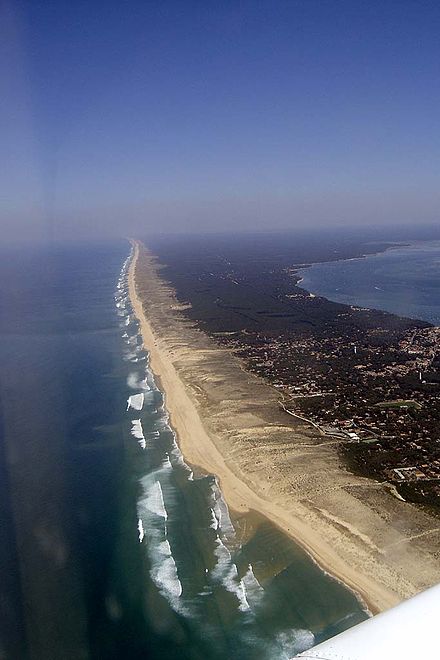Wood and steel sculptures created with a contemporary design combining wood and steel elements to create truly dynamic sculptures.
Biscarrosse and the Côte des Landes
The Côte des Landes, for those who don’t know it, is part of the Atlantic coast of France running southwards from Arcachon Bay, which is itself south west of Bordeaux.

It was originally part of the old provinces of Guyenne and Gascony, during which time it was largely poorly-drained heathland (landes in France), which was used to raise sheep - the shepherds being proficient in travelling long distances across difficult terrain on stilts. Over the years, drainage was improved - even my old friend Vauban had a hand - and the 19th century saw the region transformed from sheep country to forest, with the planting of 10,000 sq kms of maritime pines. So, now, it is a huge, sparsely populated, generally flat area, covered mainly by trees, with a couple of large but shallow lakes in the middle and world famous sand dunes edging the coast.
A beautiful but timeless part of France, you would think, where nothing much has happened for centuries. Well, yes …. but also no.

During the last century, Biscarrosse - the main centre at the heart of the Landes - became one of the hubs of France’s aviation industry as its lake was used for the development of flying boats. These days, we have largely forgotten about flying boats, thinking they were rather quaint historical toys of no great significance. But, during the first half of the 20th Century, before we developed planes that could leap the oceans, nothing was further from the truth.
Prior to the Second World War, France was developing large and sophisticated flying boats, intended to link Europe to both America and these monsters were based at Biscarrosse! Initially they were ‘flying mailboats” or ‘paquebots volantes’ - so, in a very real sense, Air Mail started at Biscarrosse - but later were developed to fly (rich) passengers across both the north and south Atlantics and to north Africa. But not many appear to have survived the war and by about 1950, the flying boat was already well on its way to becoming a thing of the past. In just 40 years, this new and beautiful form of transport was born, developed and died!
Biscarrosse also has a more timeless claim to fame. Near the town centre is what is believed to have been the oldest Elm tree in Europe, planted in 1350, it survived till 2010, when it succumbed to Dutch Elm disease. The story goes that, around 1450, a young local shepherdess called Adeline was accused of being unfaithful to her French fiancee with an English officer (at the time, the English controlled the area). She was forced to stand naked on a barrel under the tree all day until she died of shame. The day after, a bouquet of white flowers appeared on the tree where her head had rested and these re-appeared each year, in May, until, of course, the tree died.
